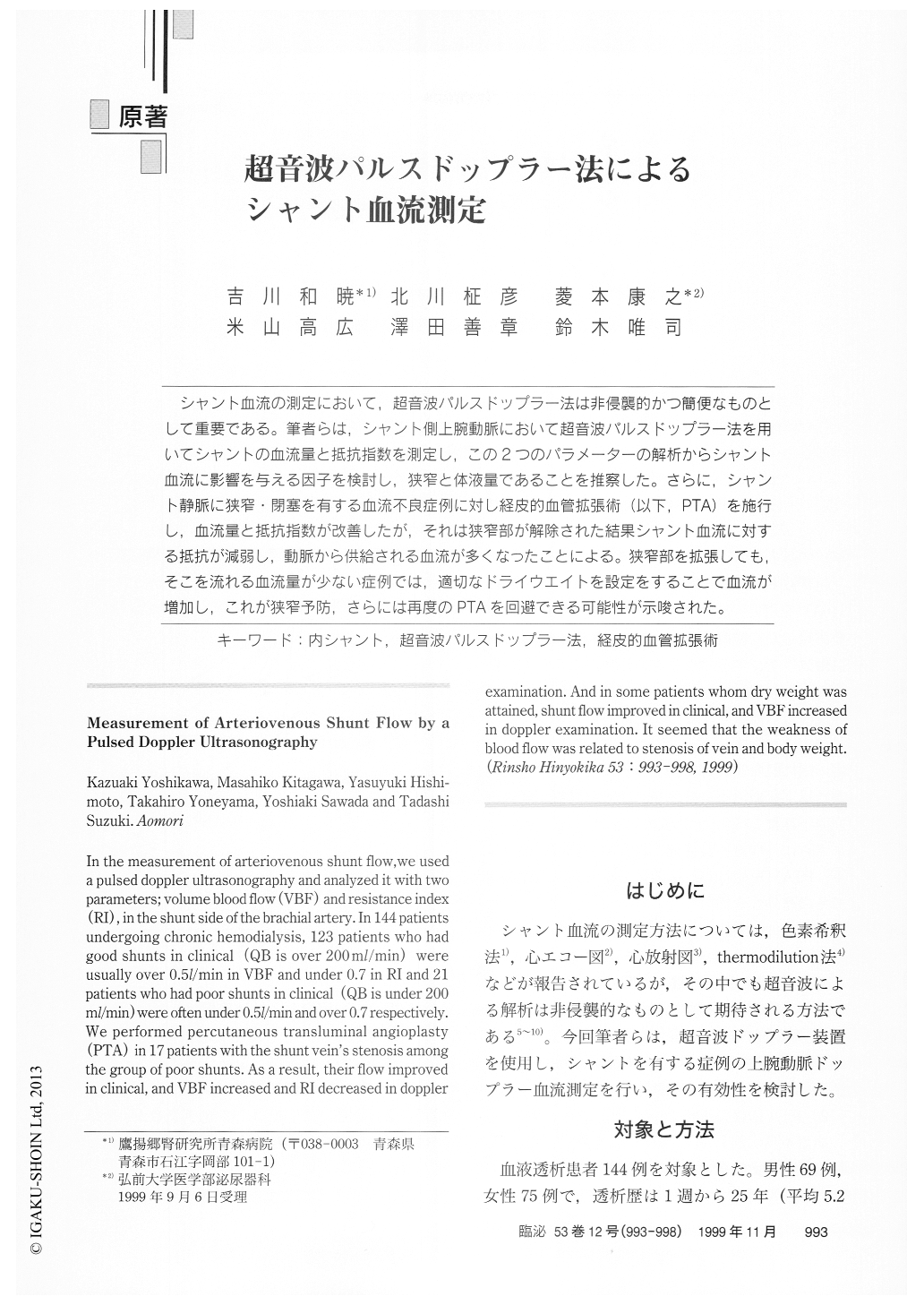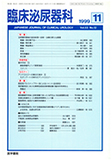Japanese
English
- 有料閲覧
- Abstract 文献概要
- 1ページ目 Look Inside
シャント血流の測定において,超音波パルスドップラー法は非侵襲的かつ簡便なものとして重要である。筆者らは,シャント側上腕動脈において超音波パルスドップラー法を用いてシャントの血流量と抵抗指数を測定し,この2つのパラメーターの解析からシャント血流に影響を与える因子を検討し,狭窄と体液量であることを推察した。さらに,シャント静脈に狭窄・閉塞を有する血流不艮症例に対し経皮的血管拡張術(以下,PTA)を施行し,血流量と抵抗指数が改善したが,それは狭窄部が解除された結果シャント血流に対する抵抗が減弱し,動脈から供給される血流が多くなったことによる。狭窄部を拡張しても,そこを流れる血流量が少ない症例では,適切なドライウエイトを設定をすることで血流が増加し,これが狭窄予防,さらには再度のPTAを回避できる可能性が示唆された。
In the measurement of arteriovenous shunt flow, we useda pulsed doppler ultrasonography and analyzed it with twoparameters; volume blood flow (VBF) and resistance index(RI),in the shunt side of the brachial artery. In 144 patientsundergoing chronic hemodialysis, 123 patients who hadgood shunts in clinical (QB is over 200ml/min) wereusually over 0.5l/min in VBF and under 0.7 in RI and 21patients who had poor shunts in clinical (QB is under 200ml/min) were often under 0.5l/min and over 0.7respectively.We performed percutaneous transluminal angioplasty(PTA) in 17 patients with the shunt vein's stenosis amongthe group of poor shunts.

Copyright © 1999, Igaku-Shoin Ltd. All rights reserved.


